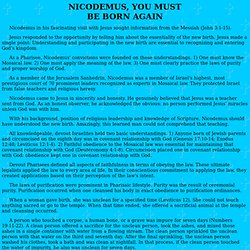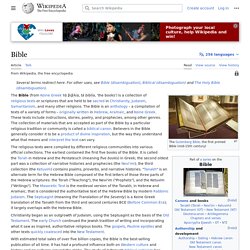

Ichthys. Ichthys (also Ichthus or Ikhthus /ˈɪkθəs/[1]), from the Koine Greek word for fish: ἰχθύς, (capitalized ΙΧΘΥΣ or ΙΧΘΥϹ) is a symbol consisting of two intersecting arcs, the ends of the right side extending beyond the meeting point so as to resemble the profile of a fish, used by early Christians as a secret Christian symbol[2] and now known colloquially as the "sign of the fish" or the "Jesus fish. "[3] History[edit] Symbolic meaning[edit] An early circular ichthys symbol, created by combining the Greek letters ΙΧΘΥΣ, Ephesus.
ΙΧΘΥΣ (Ichthus) is an acronym/acrostic[4] for "Ίησοῦς Χριστός, Θεοῦ Υἱός, Σωτήρ", (Iēsous Christos, Theou Yios, Sōtēr), which translates into English as "Jesus Christ, God's Son, Saviour". Historians[who?] A fourth century A.D. adaptation of ichthys as a wheel contains the letters ΙΧΘΥΣ superimposed such that the result resembles an eight-spoked wheel.[9] Fish in the Gospels[edit] Having resurrected, Jesus is offered some broiled fish and honeycomb in Luke 24:41-43.
Nicodemus, You Must Be Born Again. Nicodemus in his fascinating visit with Jesus sought information from the Messiah (John 3:1-15).

Jesus responded to the opportunity by telling him about the essentiality of the new birth. Jesus made a single point: Understanding and participating in the new birth are essential to recognizing and entering God's kingdom. As a Pharisee, Nicodemus' convictions were founded on these understandings. 1) One must know the Mosaical law. 2) One must apply the meaning of the law. 3) One must clearly practice the laws of purity and proper worship of God. As a member of the Jerusalem Sanhedrin, Nicodemus was a member of Israel's highest, most prestigious court of 70 prominent leaders recognized as experts in Mosaical law. They protected Israel from false teachers and religious heresy. Nicodemus came to Jesus in sincerity and honesty. With his background, position of religious leadership and knowledge of Scripture, Nicodemus should have understood the new birth.
An obvious lesson is easily missed. Bible. The Bible (from Koine Greek τὰ βιβλία, tà biblía, "the books") is a canonical collection of texts considered sacred in Judaism and Christianity.

There is no single "Bible" and many Bibles with varying contents exist.[1] The term Bible is shared between Judaism and Christianity, although the contents of each of their collections of canonical texts is not the same. Different religious groups include different books within their Biblical canons, in different orders, and sometimes divide or combine books, or incorporate additional material into canonical books. The Hebrew Bible, or Tanakh, contains twenty-four books divided into three parts: the five books of the Torah ("teaching" or "law"), the Nevi'im ("prophets"), and the Ketuvim ("writings"). Christian Bibles range from the sixty-six books of the Protestant canon to the eighty-one books of the Ethiopian Orthodox Church canon.
Etymology An American family Bible dating to 1859. Development Professor John K. Timothy H. Hebrew Bible Torah Nevi'im.